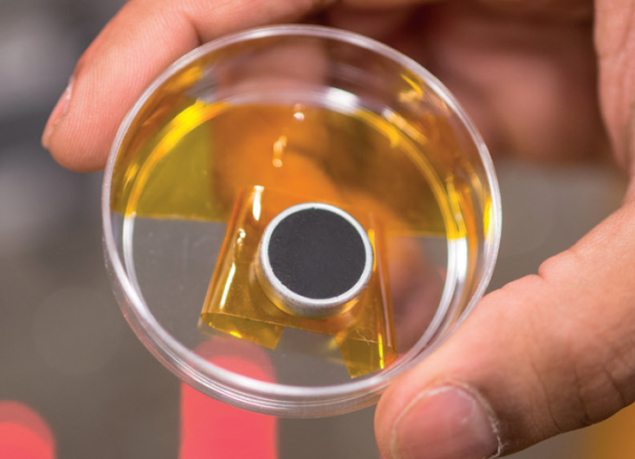
Image credit: Fermilab.
It looks like a small black button, but in tests at Fermilab’s High-Brightness Electron Source Lab it has produced beam currents 103–106 times greater than those generated with a large laser system. Designed by a collaboration led by RadiaBeam Technologies, a California-based technology firm actively involved in accelerator R&D, this electron source is based on a carbon-nanotube cathode only 15 mm across.
Carbon-nanotube cathodes have already been studied extensively in university research labs, but Fermilab is the first accelerator facility to test the technology within a full-scale setting. With its capability and expertise for handling intense electron beams, it is one of relatively few labs that can support a project like this.
Traditionally, accelerator scientists use lasers to strike cathodes to eject electrons through photoemission. With the nanotube cathode, a strong electric field pulls streams of electrons off the surface of the cathode though field emission. There were early concerns that the strong electric fields would cause the cathode to self-destruct. However, one of the first discoveries that the team made when it began testing in May was that the cathode did not explode. Instead, the exceptional strength of carbon nanotubes prevents the cathode from being destroyed. The team used around 22 MV/m to produce the target current of more than 350 mA.
The technology has extensive potential applications in medical equipment, for example, since an electron beam is a critical component in generating X-rays.
• A Department of Energy Small Business Innovation Research grant funds the RadiaBeam-Fermilab-Northern Illinois University collaboration.








